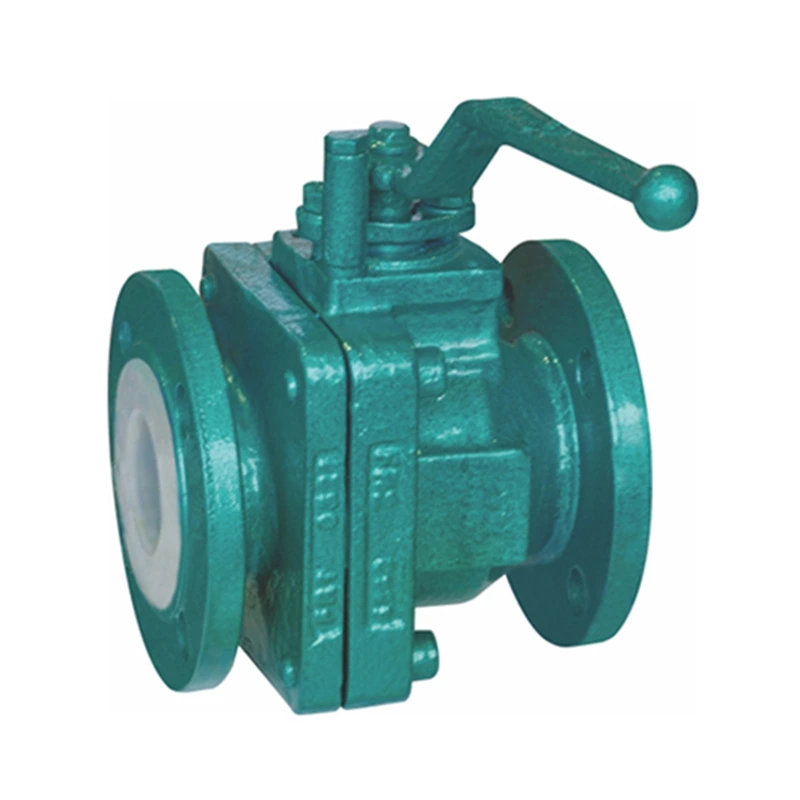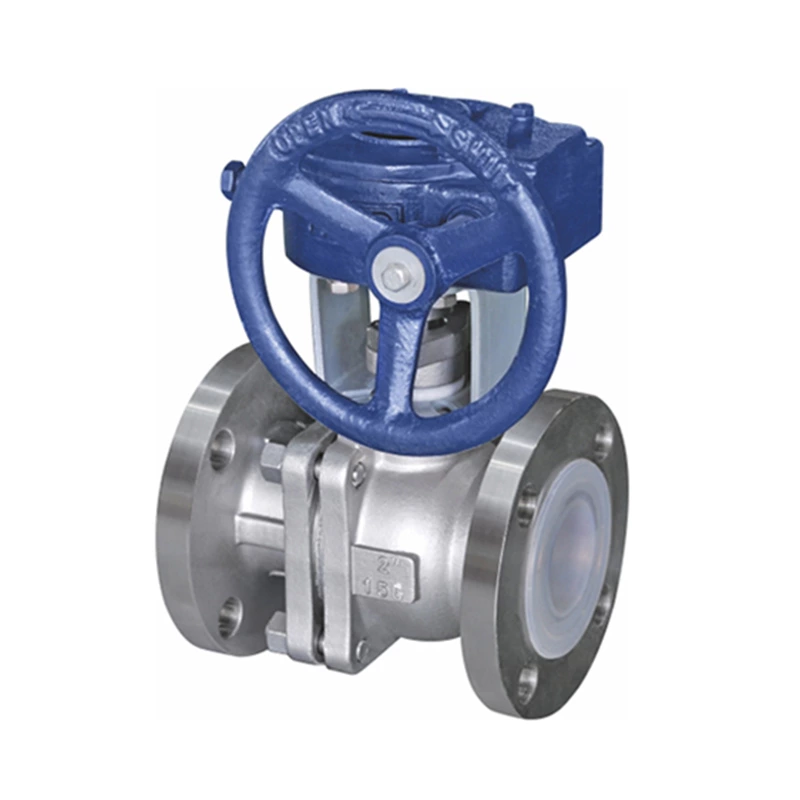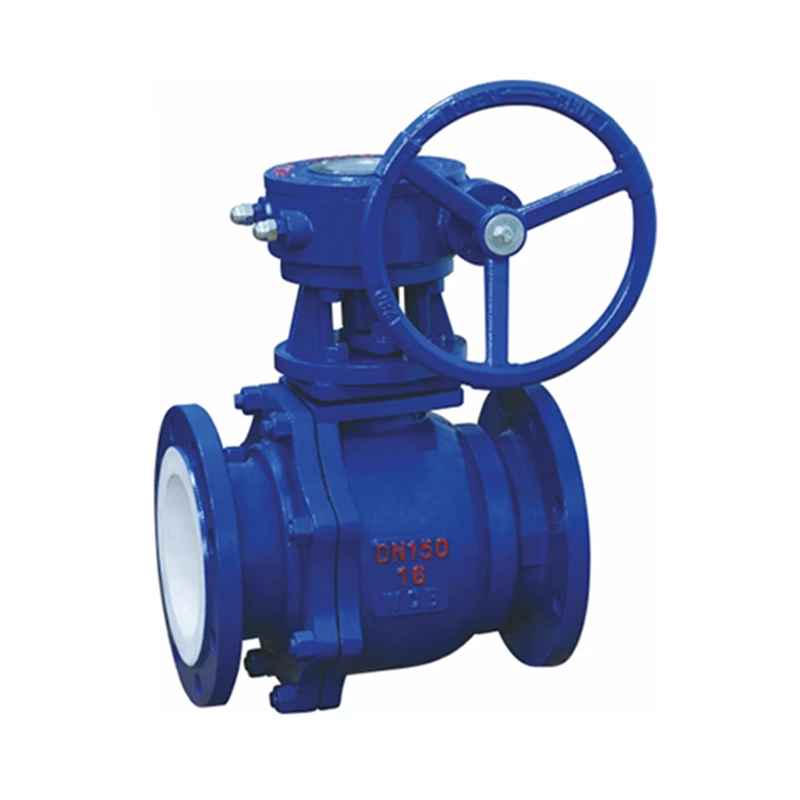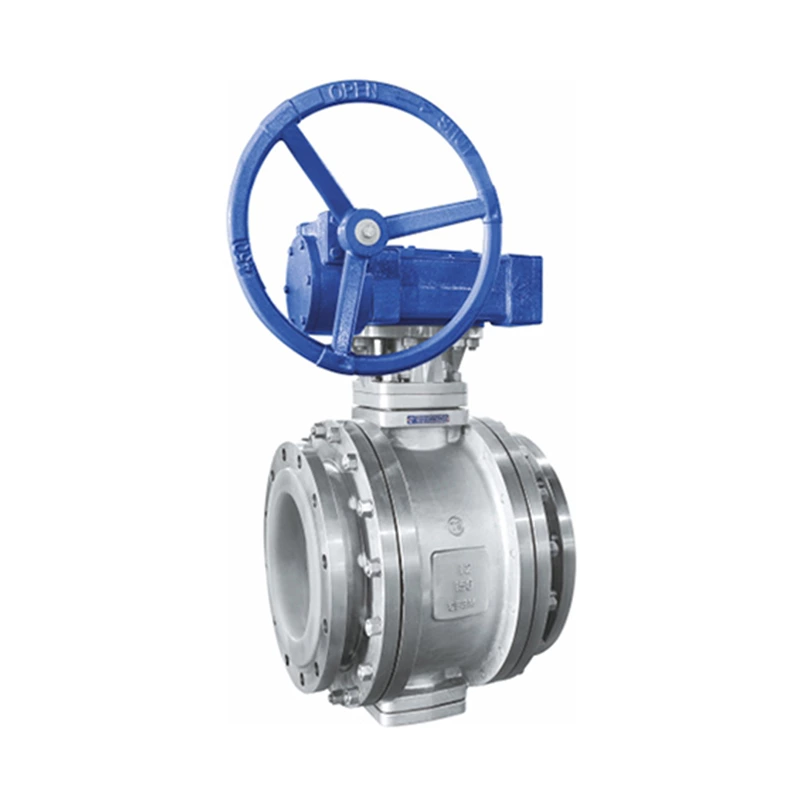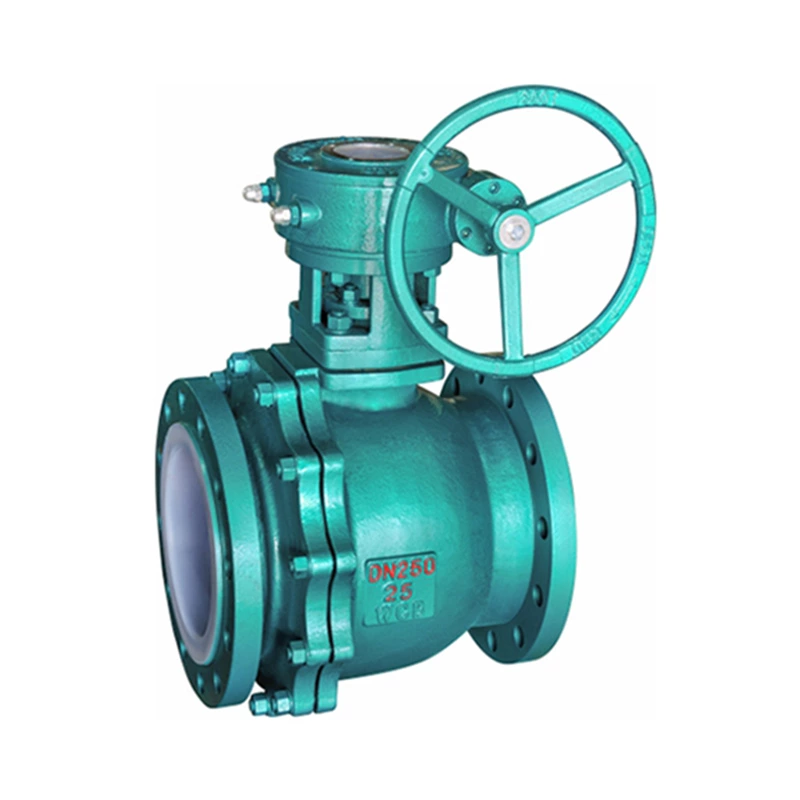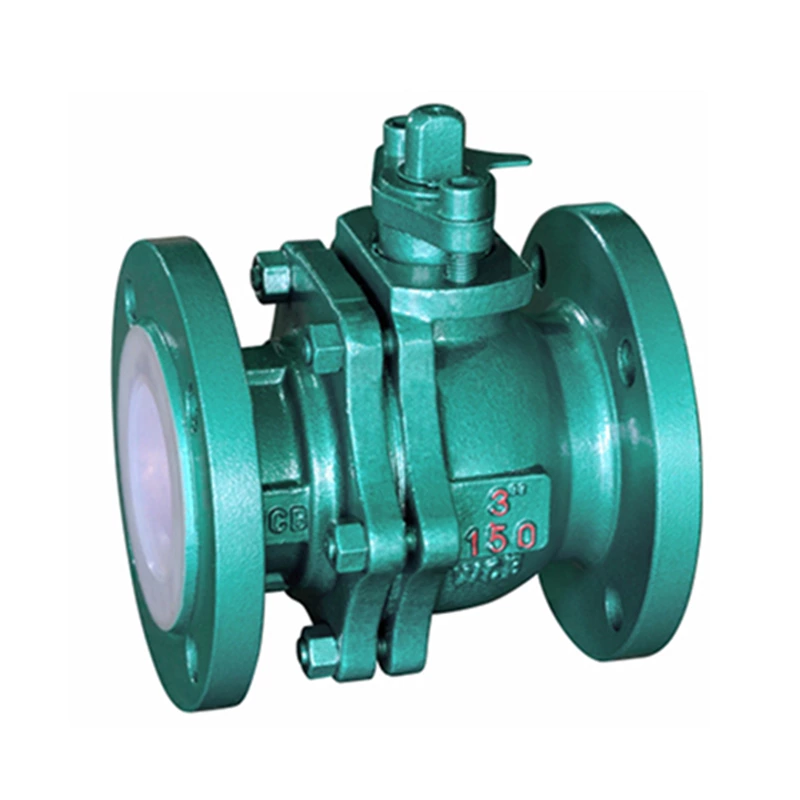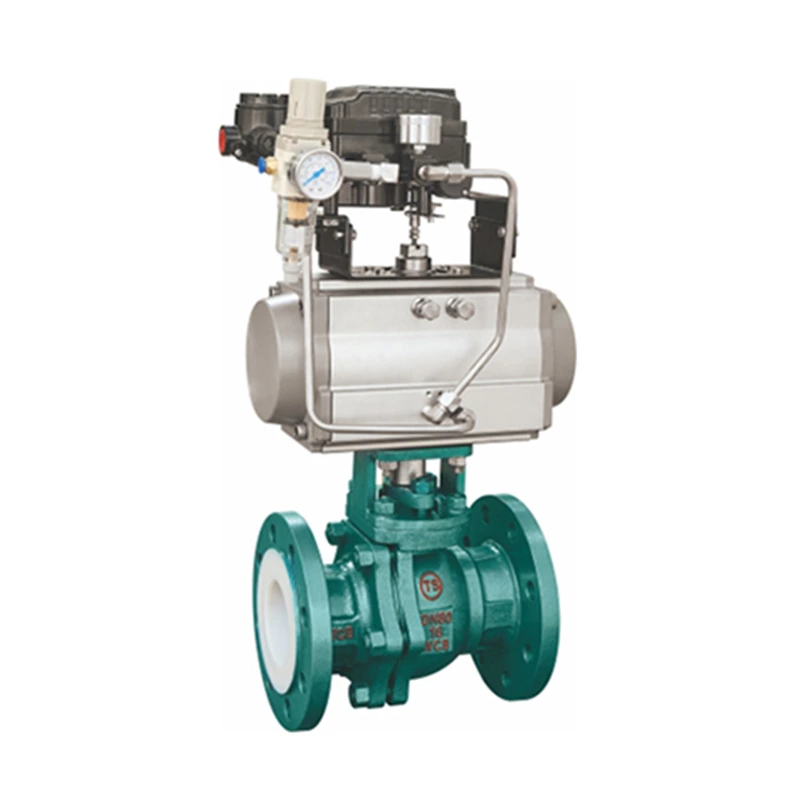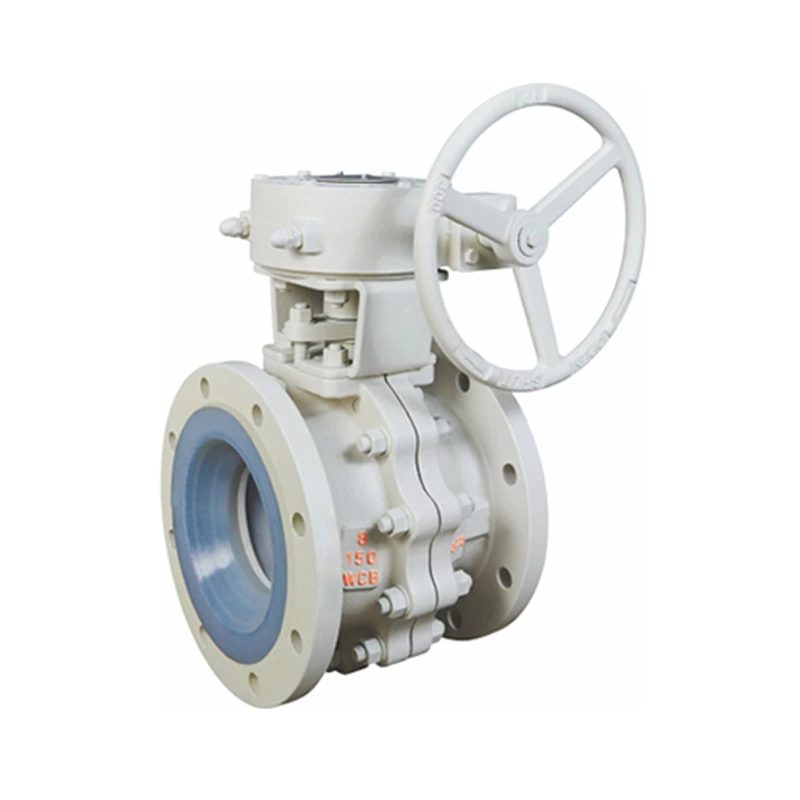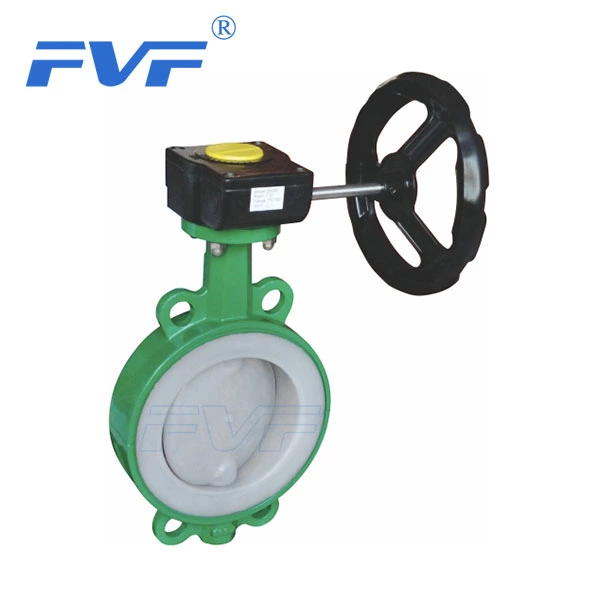Basic Use Conditions Of Common Valves
The use of Lined Valve is determined according to the conditions of the pipeline. Generally speaking, the medium, temperature, pressure, and caliber are the basic conditions for selection, followed by its installation method and the primary and secondary relationship of the pipeline. Let us introduce the use of several common valves below:
1. Gate valve (Z41H-16C)
Generally speaking, gate valves are most widely used in petrochemical, power, and water supply and drainage industries. They are mainly used in main pipelines. They can be used in high temperature, medium and high temperature, and medium and large calibers. Its medium is generally oil, steam and water, and the maximum temperature is 425℃. It has no directionality in installation and can be installed horizontally or vertically. Its characteristic is good sealing performance.
If its medium is acid, then we cannot use carbon steel, but stainless steel (P), and the maximum operating temperature is 200℃. If the medium is still oil or steam, but its temperature exceeds 425℃, then we should choose alloy steel (I), and the temperature is ≤550℃. When the gate valve has a large diameter (generally greater than 1000mm), we should recommend to customers to install a spur gear or bevel gear transmission, so that the valve can be opened more easily. The main disadvantage of the gate valve is that the opening height is large and the sealing surface is difficult to repair.
2. Stop valve (J41H-16C)
It is mainly used on auxiliary pipelines, and the diameter should not exceed 200mm. Its working conditions are similar to those of the gate valve, but it is directional in installation (low in and high out). It is generally most widely used in steam pipelines. Its disadvantage is that the fluid resistance is large.
3. Butterfly valve (D71X-10 D373H-16C (P))
Butterfly valves are generally divided into centerline butterfly valves and eccentric butterfly valves, and the materials are divided into cast iron, carbon steel and stainless steel. Cast iron butterfly valves are generally used in system pipelines at room temperature, corrosive media, and pressures of about 10 kilograms. The general sealing ring is rubber. It is widely used in construction and industrial fields, especially in water supply and drainage systems. With the wide application in the industrial field, higher requirements are also put forward for its corrosion resistance and high temperature resistance. In recent decades, eccentric butterfly valves and hard-sealed butterfly valves have been increasingly recognized by people. Butterfly valves can achieve the function of closing and regulating flow on pipelines. They have simple structure, light weight, and labor-saving switching.
In the use of butterfly valve types, we should pay attention to two points: 1. Corrosion resistance; 2. High temperature resistance.
Considering that some media in the pipeline are acidic (or alkaline) and have certain temperature requirements (greater than 80℃), general rubber sealing rings can no longer be used, and F sealing rings (≤150℃) should be used. At the same time, the butterfly plate should also be replaced accordingly (with stainless steel plates, etc.). If there are higher requirements for corrosion and temperature, hard-sealed butterfly valves should be used. For example: D373H-16C (P)
In terms of transmission form, generally larger than 200mm diameter, worm gear transmission should be used.
4. Ball valve (Q41F-16C (P))
It is widely used in petroleum, chemical, electric power, long-distance pipelines and other fields. The ball valve has the smallest fluid resistance, and its valve seat is divided into two types: floating valve seat and fixed valve seat. Small and medium-sized calibers (DN200 and below) generally use floating valve seats, and the selection of its valve seat is very important. Generally, it is selected according to its temperature. Polytetrafluoroethylene (F) can be used for temperatures below 150°C, and para-polyphenylene can be used for temperatures below 250°C. PPL, and metal seals must be selected for higher temperatures. Another point is to see whether there are hard particles in its medium, which is also very important for the selection of valve seats. It should be reminded that there are two-way ball valves, three-way ball valves, and four-way ball valves. This is one of the differences between it and other valves.
5. Check valve H44H-16C (also called one-way valve, non-return valve)
Check valves are less used in pipelines. Its characteristics: when the pressure in the pipeline changes abnormally, it can relieve pressure, and it is always normally closed under normal working conditions.
6. Safety valve A41H-16C
Safety valves are used on pipelines only as protective devices to prevent excessive overpressure. One thing you should pay attention to when purchasing is that you should ask the customer for the starting pressure of the safety valve.
